Section outline
-
In Kindergarten to Grade 5, career-life development is largely about the expanding sense of self, positive community engagement, and reflection on learning and goal-setting. Students develop an awareness of their personal interests and strengths, and the roles and responsibilities of family, school, and community in supporting their lifelong learning journey.
-
C3 (Career Curriculum Companion): Educated Citizens in an Ever-Changing World is a guide to support Career Education in all Curriculum areas through self-awareness, positive community engagement, and exploring possibilities.
-
The K-7 resource guide provides a thematic framework for K-7 with vetted resources and suggested learning activities organized into K-3, 4-5, and 6-7.
-
Learning maps are an assessment tool that shows approaching, meeting, and exceeding abilities while providing numerous triangulation of assessment activities. Attached are Learning Maps for K-3 and 4-7, created by SD 73 educators.
-
-
-
Big Life Journal has engaging resources that help students develop growth and resilient mindsets to face life's challenges with confidence. The site is organized by ages: 4-10 and 11+. Items are to be purchased but you can sign up for free weekly samples (see folder for samples) and you can listen to various thematic podcasts with your students.
Newly added "Stay At Home Care Package" -
This is a K-12 Digital Citizenship Curriculum (American) that has numerous free lessons that can be filtered by grades.
Example:
K - Media Balance is Important
1 - How Technology Makes You Feel
3 - This is Me
4 - My Media Choices
-
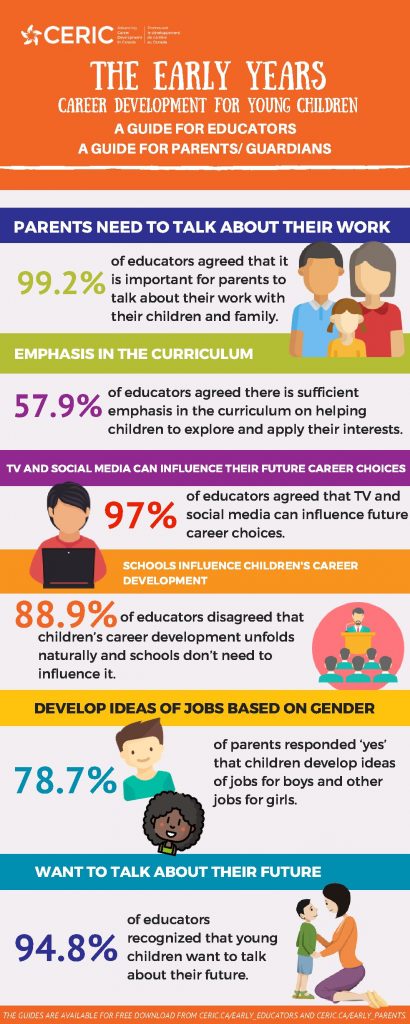
There is a Guide for both parents and educators
synopsis
The roots of career development begin early in a child’s life. Through play, young children explore their environment, learn to problem solve, make decisions and adjust to change. From a young age, children envision themselves in possible roles for their future. They talk about and try on their hopes and dreams. During these formative years, young children are influenced by family, school and media – and need to be supported in their career development.
-
The Critical Thinking Consortium under Generate Creative Ideas has lessons in both French and English: Imagine "What if?", Imagining by drawing analogies, Imagining design possibilities through shape, Imagining through a superhero's powers, Imagining through design components, Imagining through exaggeration, Imagining through the senses.
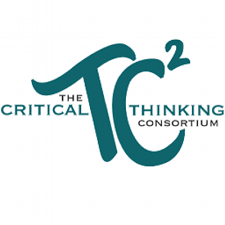
-
 From Peter H. Reynolds, bestselling author of THE DOT and ISH, comes a story that inspires readers of every age to find their own unique path to be happy, and to always follow their dreams! Also try Say Something, I am Human, The Word Collector and Going Places.
From Peter H. Reynolds, bestselling author of THE DOT and ISH, comes a story that inspires readers of every age to find their own unique path to be happy, and to always follow their dreams! Also try Say Something, I am Human, The Word Collector and Going Places. -
 Critical Thinking Consortium has ten lessons on Relating to others in both English and French: Empathic, Finding another perspective, Identifying leadership qualities, Independent mindedness, Inside someone's head, Listening and learning from Elders, Point of view, Rate of individual significance, Selecting actions to strengthen relationships.
Critical Thinking Consortium has ten lessons on Relating to others in both English and French: Empathic, Finding another perspective, Identifying leadership qualities, Independent mindedness, Inside someone's head, Listening and learning from Elders, Point of view, Rate of individual significance, Selecting actions to strengthen relationships. -
Small Talk - CBC is an unscripted show about kids, for kids with host Dave Keystone. Episodes explore wide-ranging topics about growing up, such as 'Being Normal', 'When I am an Adult', and 'Goodness'. Shot in the Canadian countryside. When educators access this resource through the digital database of curio.ca, there are complimentary Teacher Guides. Episodes range from 2 to 2 1/2 minutes. This resource connects to career development through growth in self-awareness and community.
-
The Stigma-Free Society is offering tool kits to educators to promote wellness for Grades 4-7. Kits include documentary videos, mental health topics and personal stories, and interactive components for youth. Career Education learning standards are identified in numerous lessons.

-
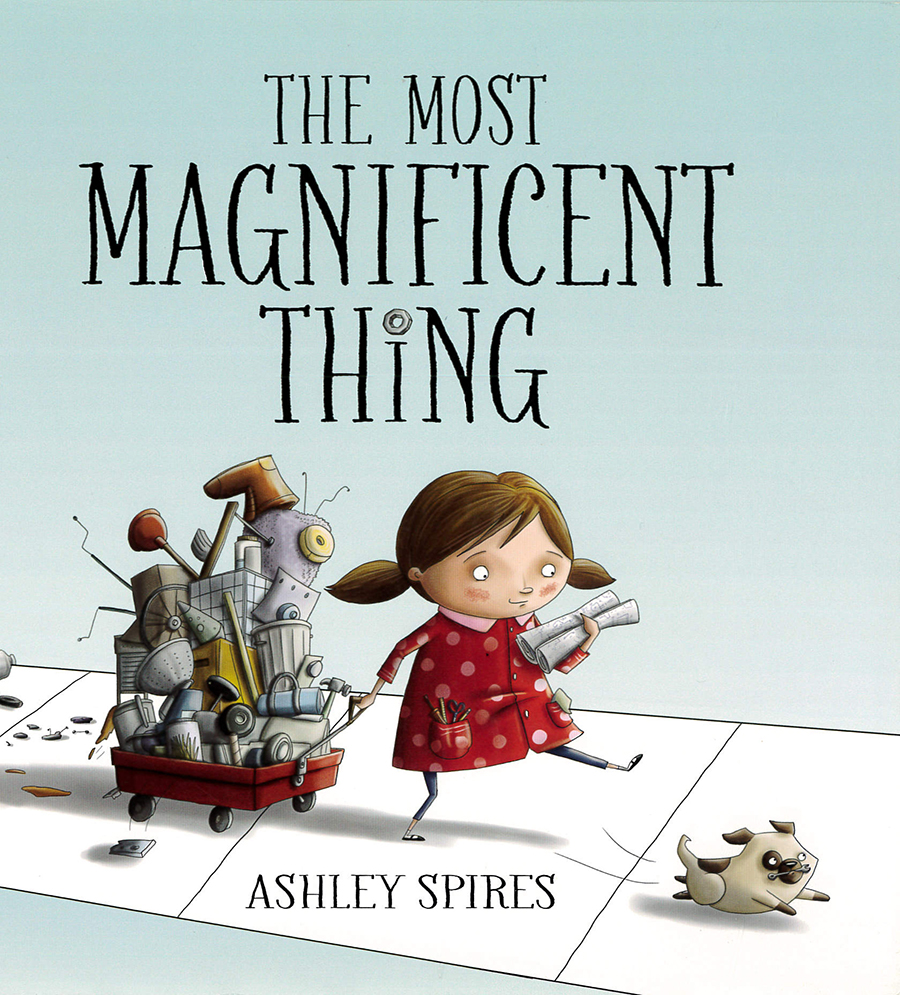 The Most Magnificent Thing. Written by Ashley Spires. Illustrated by Ashley Spires. Award-winning author and illustrator Ashley Spires has created a charming picture book about an unnamed girl and her very best friend, who happens to be a dog.
The Most Magnificent Thing. Written by Ashley Spires. Illustrated by Ashley Spires. Award-winning author and illustrator Ashley Spires has created a charming picture book about an unnamed girl and her very best friend, who happens to be a dog.This children's story can be used to explore reflection and resiliency, plus Spires is from BC.
also by Ashley Spires is The Things Lou Couldn't Do, this picture book connects to roles in communities and self-awareness.
-
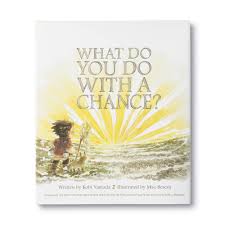 What Do You Do with a Chance by Kobi Yamada: An Interactive Read Aloud Book for Kids followed by a 'Butterfly Chances' craft that has been inspired by the reading.
What Do You Do with a Chance by Kobi Yamada: An Interactive Read Aloud Book for Kids followed by a 'Butterfly Chances' craft that has been inspired by the reading.Also try What Do You do with a Problem? and What Do You Do With an Idea? -
Inspired by the story What Matters, students complete small acts that can make a big difference and create stories about their act in a style like the one used in What Matters. (Core Competency Illustration).
-
-
-
Explore what makes a community happy and safe with the 36 wordless cards in the Build-a-Story Cards: Community Helpers deck. Kids aged 3 - 10 will love piecing together stories with firefighters, kid superheroes and more, using the color-coded character, setting and object cards.
-
This Careers Activity Book is from Texas, US and explores careers thematically through industries, and has numerous activities students can do.

-
 Career Education and the Sustainable Development Goals (SDGs) support learning that imagines career-life futures. The Career Education and the SDGs pdf PowerPoint has lessons from K-3 'People in our Neighbourhood' and 4-7 'Walk, work and Wonder' that connect curriculum learning with SDGs.
Career Education and the Sustainable Development Goals (SDGs) support learning that imagines career-life futures. The Career Education and the SDGs pdf PowerPoint has lessons from K-3 'People in our Neighbourhood' and 4-7 'Walk, work and Wonder' that connect curriculum learning with SDGs. -
Career Development Elementary Guide, 2017 Newfoundland Labrador

-
Through a variety of critical thinking challenges, students explore the many ways in which family and community members help meet one another's needs, grades K-3 (Critical Thinking Consortium).
-
Reading Level: Gr. 6-7 Interest Level: Gr. 5-9+
This innovative series opens readers’ eyes to the endless possibilities of design thinking— an iterative process that employs a human-centered approach to problem solving, and emphasizes empathy, collaboration, and innovative thinking. Each title focuses on open-ended topics related to social change. Case studies, hands-on learning, and question prompts encourage readers to engage meaningfully with key concepts. -
Explore personal awareness through indigenous heroes, from historic to modern day heroes, from athletes to doctors. Readers are encouraged to take the pride and accomplishments of these heroes and apply this to their own world. This is a great book for everyone.
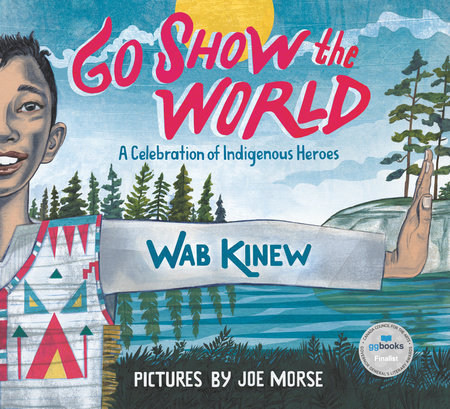
"We are people who matter yes it's true, now let's show the world what people who matter can do."
-
The eight units in this teacher resource guide illustrate examples of how authentic resources can be incorporated in primary classrooms. Each unit weaves career education alongside various
-
Check out the ITA Youth has numerous resources from the Maker Club Playbook to Youth skills challenges.

-
Grow BC is a resource designed for teachers to show K-12 students the diversity of our province’s commodities and the importance of BC’s agriculture industry. It includes topics for straightforward integration into class curriculum. Teachers were directly involved in developing Grow BC to ensure its effective use.
-
Students work in small groups to make newspaper shoes.
-
From the Learn 360 Info Base, Each 7-minute adventure finds Howie and Baboo—a curious, imaginative five-year-old boy and his hilarious, non-verbal lillte money sidekick in the mindst of an exciting make-believe scenario linked to the question of the episode. A Star Trek-like adventure would see them pass by the moon and later wonder why the moon has "holes" in it. A team of real-life kid Questioneers appear on the Q-Pad to offer possible (sometimes funny) answers to the questions. Then Howie and Baboo go out into the real world—for example to see an astrophysicist at one of North Amercica's largest telescopes and learn from a grown up Expert who demonstrates an experiment with Howie and Baboo's help. Now You Know cirriculum includes: learning through imaginitive play, simple experiments and demonstations, creative problem solving, exploring new activities and environments, cooperation, teamwork, and much more!
-
Our Hidden Heros, from The Critical Thinking Consortium, focuses on contributing to the classroom and school community. Grade 1-2 focuses on thoughtful actions, 3-4 focuses on appropriate and inappropriate behaviour, grade 5-6 expands on actions that make contributions while valuing diversity, rights, and responsibilities. There is a cost to the learning resources and the files attached are the free samples provided.
-
Bjoerk, Dr Seuss, Whoopi Goldberg, Andy Warhol, Ellen MacArthur, Greta Gerwig, Andrea Bocelli, Hua Mulan ... these are men and women who all dared to be different.
Boys will be boys and girls will be girls - or so the meaningless saying goes. Because what if you're a girl and you like cage fighting? Or you're a boy and you love ballet? And what if you've always dreamed of being a scientist but you can't see anyone who looks or sounds like you, and who has left a legacy - in the form of microscopes and Bunsen burners - for you to follow?
This is the book for children who want to know about the lives of those heroes who have led the way, changing the world for the better as they go.Also try
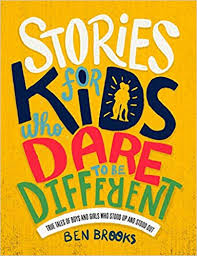 and Good Night Stories for Rebel Girls
and Good Night Stories for Rebel Girls -
Take Action topic packs are real-world inquiries for grades 4-6. They include a 32-page magazine-style book for students, anchor videos, and Teacher's Guide, and is designed for whole-class study with students working in small groups. Recommended topics are:
The Media Effect
Community Cares
Lead the Way
In Our Hands
-
Talk About is a series of non-fiction books designed to provide models of everyday things, things all around me, and science in my world for ESL students and are a design suitable for all students grades 1-8. There are 3 sets, each containing 24 books from Scholastic.
-
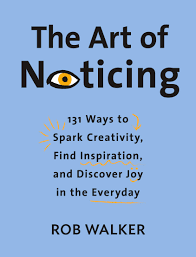
The Art of Noticing: 131 Ways to Spark Creativity, Find Inspiration, and Discover Joy In the Everyday presents a series of exercises and prompts and games and things you can actually do (or reflect upon) to build attention muscles or just get off your phone and enjoy noticing stuff that everyone else missed. -
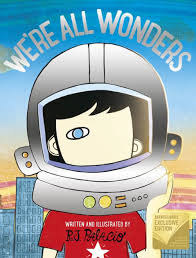 by R.J. Palacio taps into every child's longing to belong, and to be seen for who they truly are. It's the perfect way for families and educators to talk about empathy and kindness with young children.
by R.J. Palacio taps into every child's longing to belong, and to be seen for who they truly are. It's the perfect way for families and educators to talk about empathy and kindness with young children. -
The Faculty of Engineering and Applied Science at Queens and Aboriginal Access to Engineering have resources for kids and teachers that explore what engineers do. For example, there is an interactive Bear Paw Trail multimedia journey that, through stories and games, can help kids understand what engineers do or order free comic books that describe different types of engineers.
-
Working in Canadian Communities has four texts to explore with inquiry questions and further learning. The Henry Education Centre has all four texts (sets of 8) as inquiry packs.
Working in Canadian Communities Inquiry Question Further Resources Jobs in Canadian Cities by Diane Bailey Why do people live in cities?
Why are some types of jobs located there?The Canadian Atlas Online
Canadian Geographic Games
Kidport
Kids World TravelJobs in Rural Canada by Todd Kortemeier What are some of the rural jobs near your area?
How are they different from jobs in other areas of CanadaCanadian Forestry Association: Kids Corner
Knowitall.org: Exploring Careers
Natural Resources Canada: Welcome to the Kids' ClubJobs in Suburban Canada by Todd Kortemeier What jobs are available in a suburb near you?
What makes them different from jobs in other suburbs?Canadian Geographic Kids
Knowitall.org: Exploring Careers
National Geographic Kids: CanadaJobs in Small Town Canada by Samantha S. Bell What are some jobs in a small town that are connected to the environment?
How are these jobs different from those in a small town in another region?Canadian Geographic Kids
Kids' Stop: Indigenous and Northern Affairs Canada
-
-
-
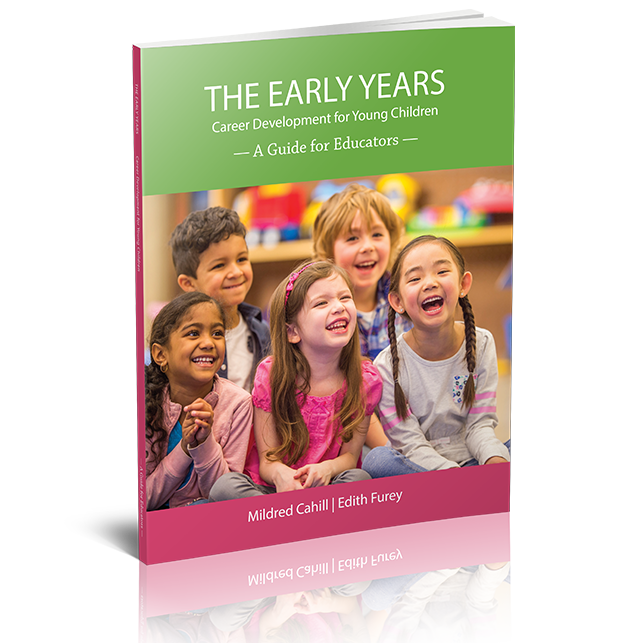
An excellent educator resource for current Canadian foundations to support authentic career development in a changing world of work. Approaches with case vignettes that explore:
- construction of self
- influences on children's development
- adapting to change, making decisions, and problem solving
- importance of children's involvement
- hopes dreams, and aspirations for future selves
- construct of work and parents' work
See The Early Years: Career Development for Young Children - A Guide for Parents/Guardians to support parent and community connections.
-
This Teacher Guide from the Ministry of Education in Alberta is for Grades 4, 5, and 6. The guide
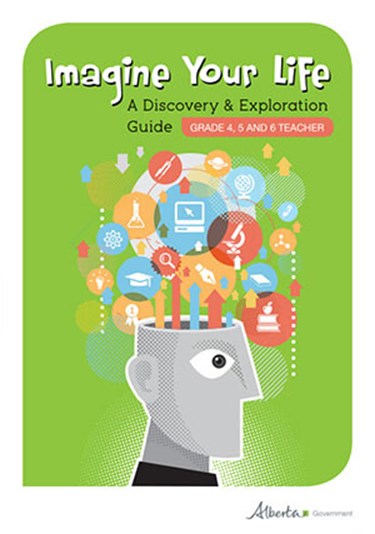 helps students to explore the world of learning and work, and encourages students to keep exploring opportunities as they continue through school through four steps:
helps students to explore the world of learning and work, and encourages students to keep exploring opportunities as they continue through school through four steps:1) Who are you?
2) What is out there?
3) How do you get ready for the future?
4) What can you do right now?
This publication can be ordered online or downloaded at alis.alberta.ca/publications
-
Mississippi Department of Education has provided K-12 Career Lessons with full unit and lesson plans for all ages.

-
Search by filter and grade for free K-12 project-based and one to one lessons. There are numerous videos, worksheets, and interactive activities.

-
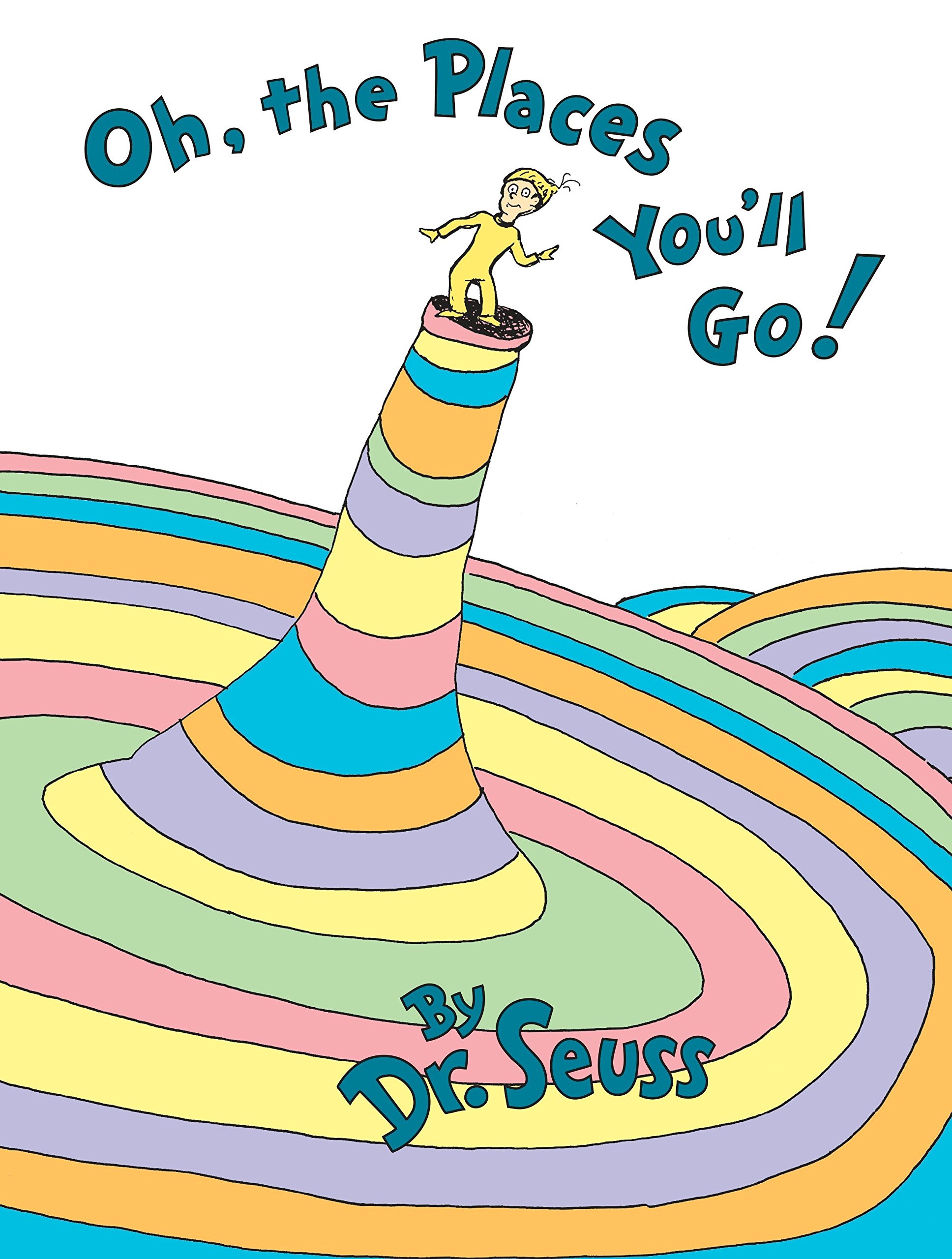
Dr Seuss' masterful story "Oh, The Places You'll Go!" instructs readers to moving forward in life and overcoming challenges. Ideal for any age this book has been a guide to graduates of Kindergarten through college and remains a great advisor to many adults (6 minutes).
Suggested activity: Look at the theme. How does this story connect with you?
-
The Thinking Consortium has 7 lessons that provide strategies students can use when preparing to act (this can be planning and self-awareness): Analyze solutions, Cause and consequence, Clarify a problem, Dealing with ambiguity, Explore options, Rate the decision, State the problem.

-
Adda Twist Scientist, Iggy Peck Architect and Rosie Revere Engineer contextualize the skills that a
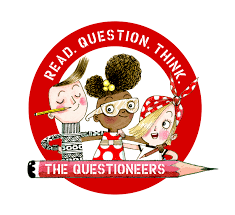 re utilized in careers. There are posters, free downloads and more...such as a reading Rosie Rever Engineer from space.
re utilized in careers. There are posters, free downloads and more...such as a reading Rosie Rever Engineer from space. -
Explore how you can use the Sustainable Development Goals to examine interests and passions, as well as careers that make the world a better place. This Toolkit has both elementary and secondary resources and ideas which lets educators see how Sustainable Development Goals can be used K-12.

-
